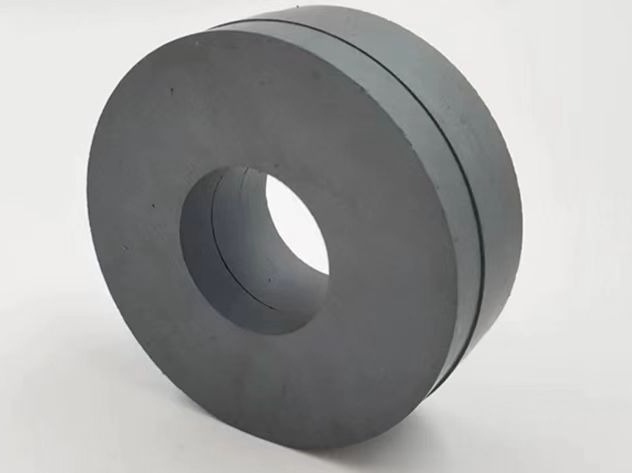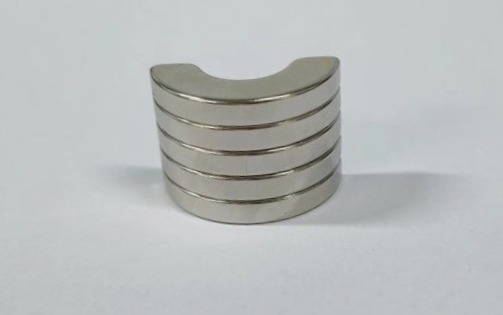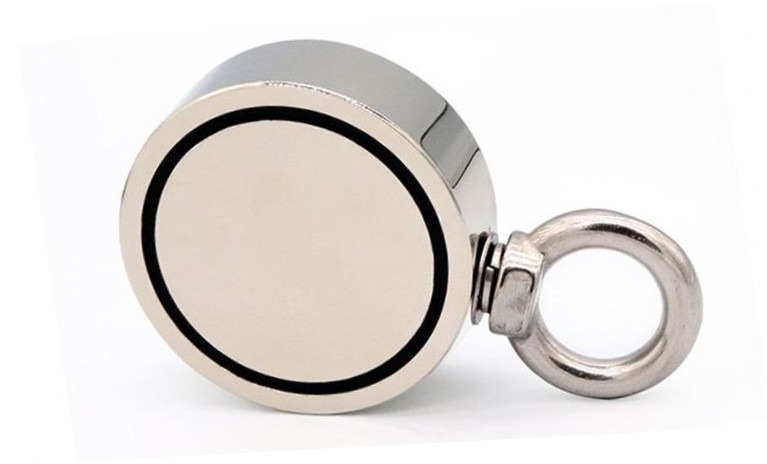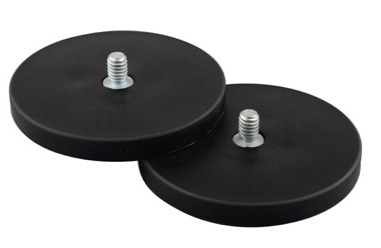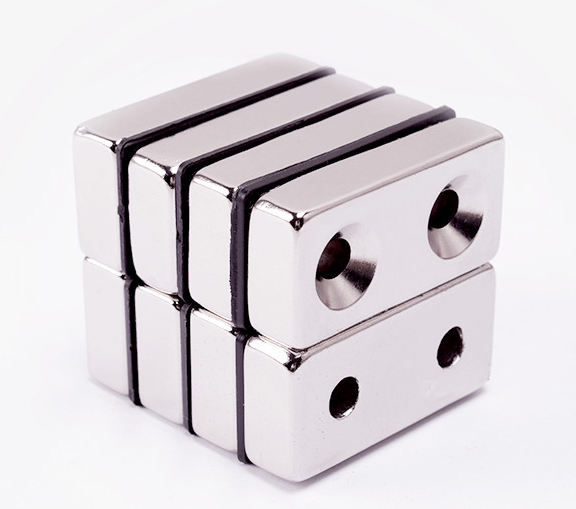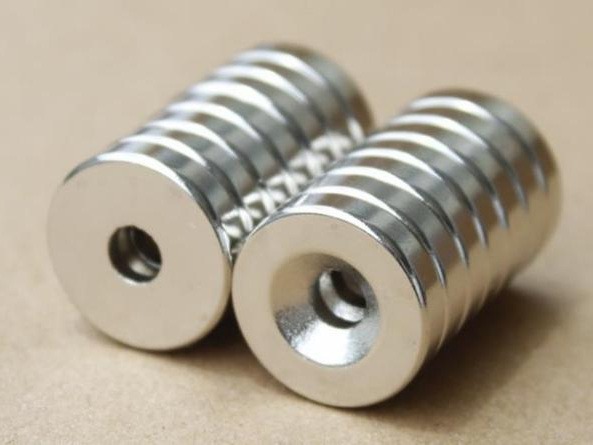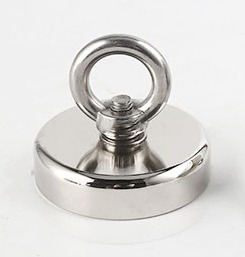Detailed Guide to Samarium Cobalt Magnet
Permanent samarium cobalt magnets (SmCo) are composed of samarium, cobalt, and iron. These rare earth magnets are small, metallic in appearance, and have simple shapes such as rings, blocks, and disks, making them extremely strong.
What Are the Properties of Samarium Cobalt?
1. High resistance to demagnetization
2. High energy
3. Good temperature stability
4. Expensive materials (cobalt is sensitive to market prices)
General Physical Properties
| Grade | SmCo5(RECo5) | Sm2Co17(RE2Co17) |
| Temperature Coefficient of Remanence(Br) | -0.05%/°C | -0.03%/°C |
| Curie Temperature | 750°C | 800°C |
| Density | 8.2-8.4g/cm3 | 8.3-8.5g/cm3 |
| Vickers Hardness | 450-500Hv | 500-600Hv |
| Max.Operating Temperature | 250°C | 300-350°C |
Application of Samarium Cobalt Magnet
Computer disk drives, sensors, traveling wave tubes, linear actuators, satellite systems, and motors where temporary stability is critical.
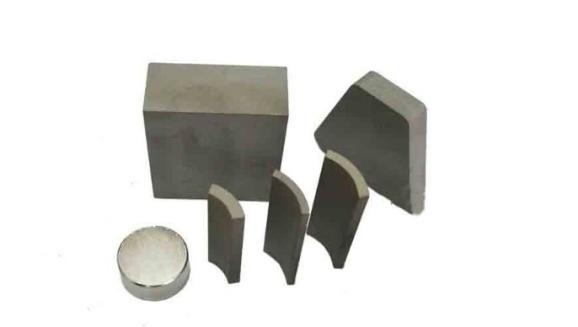
Tolerance of Samarium Cobalt Magnet
For pressed materials, the tolerance on thickness (magnetization direction) is ±. 005. Other dimensions are ± 2.5% or ±. 010, whichever is greater.
In sintered metal magnets, visual defects such as fine line cracks, pores, and small chips are usually found. Notched edges are considered acceptable if no more than 10% of the surface is missing. Cracks are acceptable as long as they do not exceed 50% of the pole surface.
Magnetization and Treatment of Samarium Cobalt Magnet
SmCo magnets are very fragile and have strong magnetism. Therefore, these magnets must be handled with extreme care to avoid personal injury and damage to the magnets. Fingers can get caught badly between the attraction magnets. If the magnet is allowed to “jump” on the attracting object, the magnet will break. It is strongly recommended to magnetize the rare earth magnetic components after assembly after building them.
Smco Processing of Samarium Cobalt Magnet
SmCo magnet production process: batching → smelting and ingot making → powder making → molding → sintering and tempering → magnetic testing → grinding → pin cutting → finished products.
SmCo magnet material is not suitable for traditional processing methods because it is easy to break and crack. However, it can be ground, but only with a large amount of coolant. The coolant minimizes the risk of fire caused by thermal cracking and oxidizing grinding dust.
Introduction of Samarium Cobalt Magnet Grinding
Due to the high performance of samarium cobalt permanent magnet materials, it is often necessary to make small components with small sizes and high precision, and the required shapes are also various.
The sintered blank has a simple geometry, size, and surface roughness that does not meet the requirements, so it must be machined to meet the customer’s use requirements.
Through machining, it can generally be processed into discs, cylinders, rings, cuboids, trapezoids, irregular shapes, etc. Grinding is one of the main methods of magnet machining.
The principle of grinding is to use a grinding wheel to crush the surface layer of samarium cobalt for cutting, so as to make it meet the requirements of size and roughness. There are many types of grinders. According to the requirements of workpiece processing, surface grinders, coreless grinders, cylindrical grinders, internal grinders, double-sided grinders, etc. can be selected. But no matter which grinder is used, the choice of grinding wheel is very important. The grinding of samarium cobalt magnet products generally uses diamond grinding wheels. Coarse grains have a large amount of grinding and are suitable for rough grinding, while those with fine grains have a small amount of grinding and are suitable for fine grinding. As for the size of the particle size during fine grinding, it depends on the roughness requirements of the product.
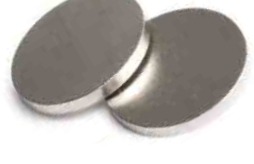
Introduction of Samarium Cobalt Magnet Slicing
Like NdFeB, samarium cobalt slicing is also a common processing method. At present, there are several methods such as inner circular slicing, outer circular slicing, and multi-line slicing.
The inner circle slice and the outer circle slice use diamond thin slices (also called blades), whose thickness can be less than 0.4mm, to quickly cut the samarium cobalt permanent magnet.
Multi-wire slicing is a method in which a metal wire is wound on a guide shaft through the high-speed reciprocating motion of the wire, which can simultaneously perform multiple cuts and obtain multiple slices at the same time.
EDM (Wire EDM) Machining of Samarium Cobalt Rare Earth Magnets
EDM, also known as wire cutting, is based on the corrosion principle of pulse discharge and uses molybdenum wire as a cutting tool. The diameter of molybdenum wire is about 0.2mm, so there is less material loss during processing.
Its advantages are that it can process irregular patterns of different shapes (special-shaped magnets), and it has less material loss. The disadvantages are slow processing speed, poor surface finish, and high processing costs.
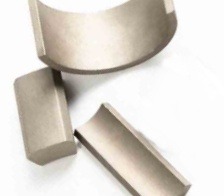
Other Notes:
1. SmCo magnets are easy to peel. Goggles must be worn when handling them.
2. Striking magnets together can cause the magnets to shatter, which can lead to potential hazards.
3. SmCo manufacturing is made by sintering all materials in a process called sintering, which is very likely to produce cracks inside. The magnet has no mechanical integrity, but only the function of preparing a magnetic field. Therefore, special mechanical systems must be designed to give the overall system sufficient mechanical reliability
KENENG can manufacture samarium cobalt magnets in various shapes and provide custom magnet services. We hope that customers in need can contact us at any time to obtain a cost-effective quotation.

